PPT 1.7: Articular Cartilage
1/77
There's no tags or description
Looks like no tags are added yet.
Name | Mastery | Learn | Test | Matching | Spaced |
|---|
No study sessions yet.
78 Terms
What is the first function of articular cartilage?
To distribute joint loads over a wide area to decrease stress on joint surfaces
What is the second function of articular cartilage?
Allow relative movement of opposing joint surface with minimal friction and wear
What does articular cartilage rely on?
Composition and structure to perform these functions
How thick is articular cartilage?
2-4mm
What is articular cartilage composed of?
1. Chrondrocytes
2. Extracellular matrix (collagen, PGs, and water)
What percent of articular cartilage is chrondrocytes?
10%
What is the extracellular matrix of articular cartilage composed of?
1. Collagen (15%)
2. Proteoglycans (PGs) (5%)
3. Water (70%)
How is water distributed in the extracellular matrix?
Unevenly (80% at surface, 65% at deep zone)
What is articular cartilage made the most of?
Water
What type of collagen is mostly in articular cartilage?
Type II
What is the structure of collagen?
Fibrous ultrastructure with a zonal pattern of fiber distribution (layered)
When are collagen fibers strong and weak?
Strong in tension but weak (buckle) under compression

What types of collagen ultiamtely give structure to collagen?
Type II, IX, and XI
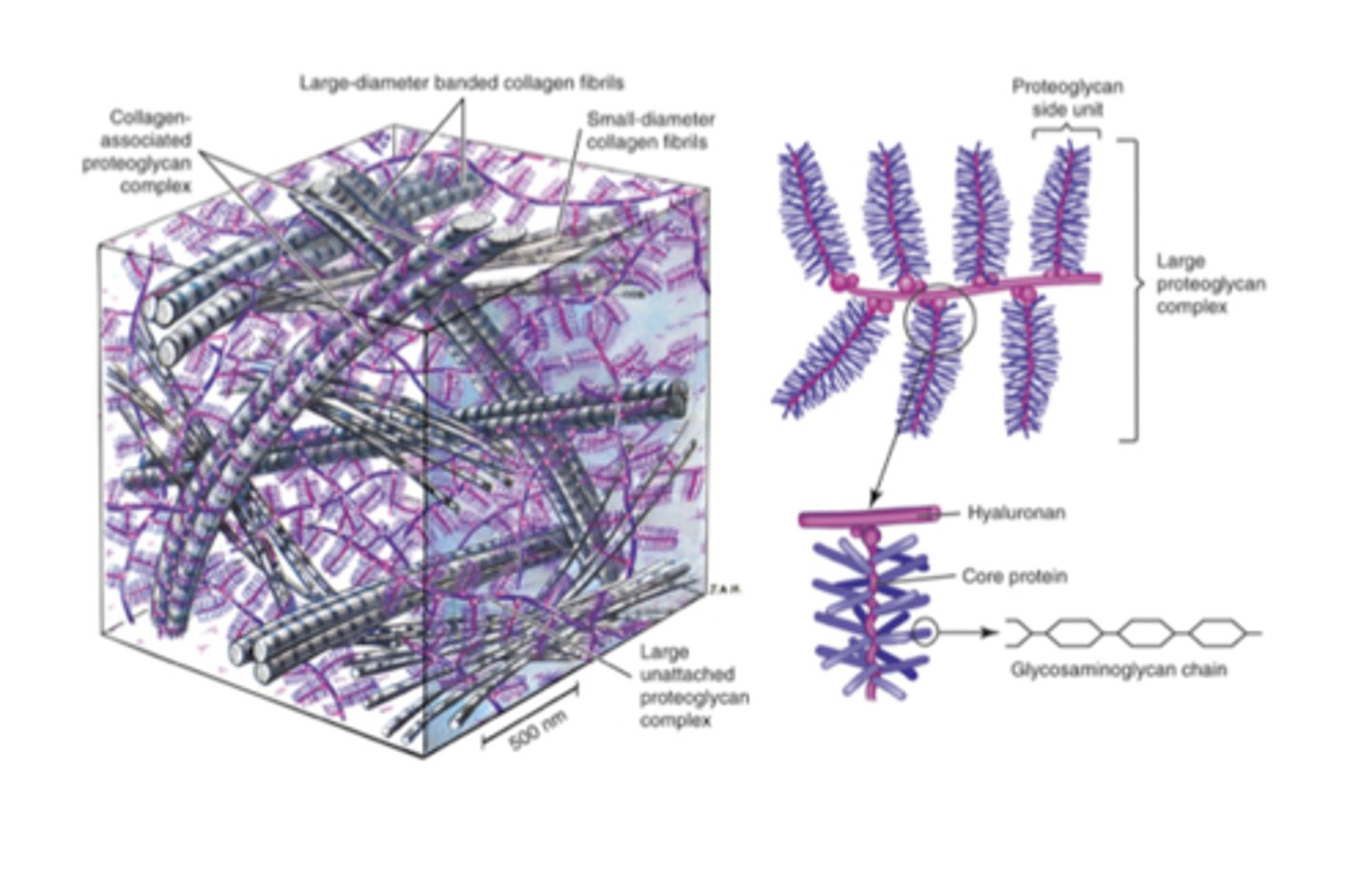
What are the zones of cartilage?
1. Superficial zone
2. Middle zone
3. Deep zone
What is the superficial zone in contact with?
Synovial fluid
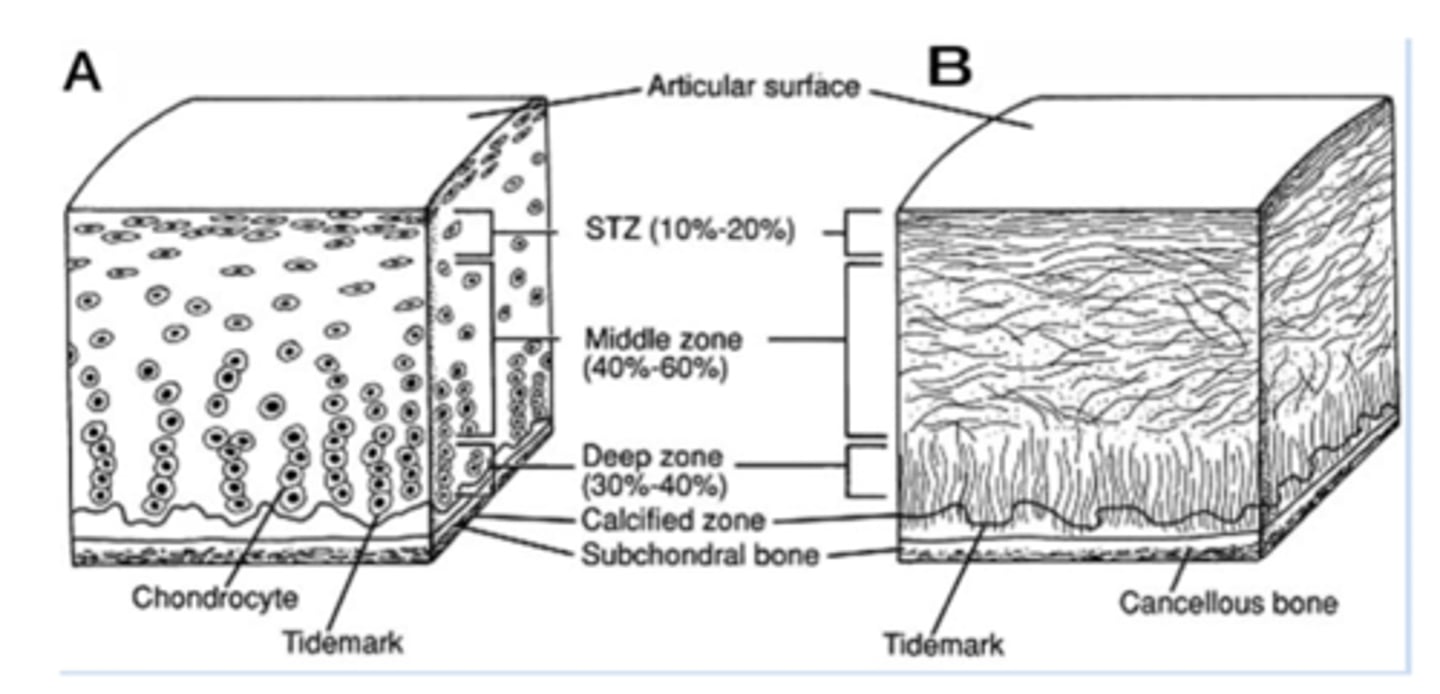
Why is integrity of the superficial zone essential?
To protect deeper layers and bone

How is collagen distributed in the superfical zone?
Woven parallel to surface
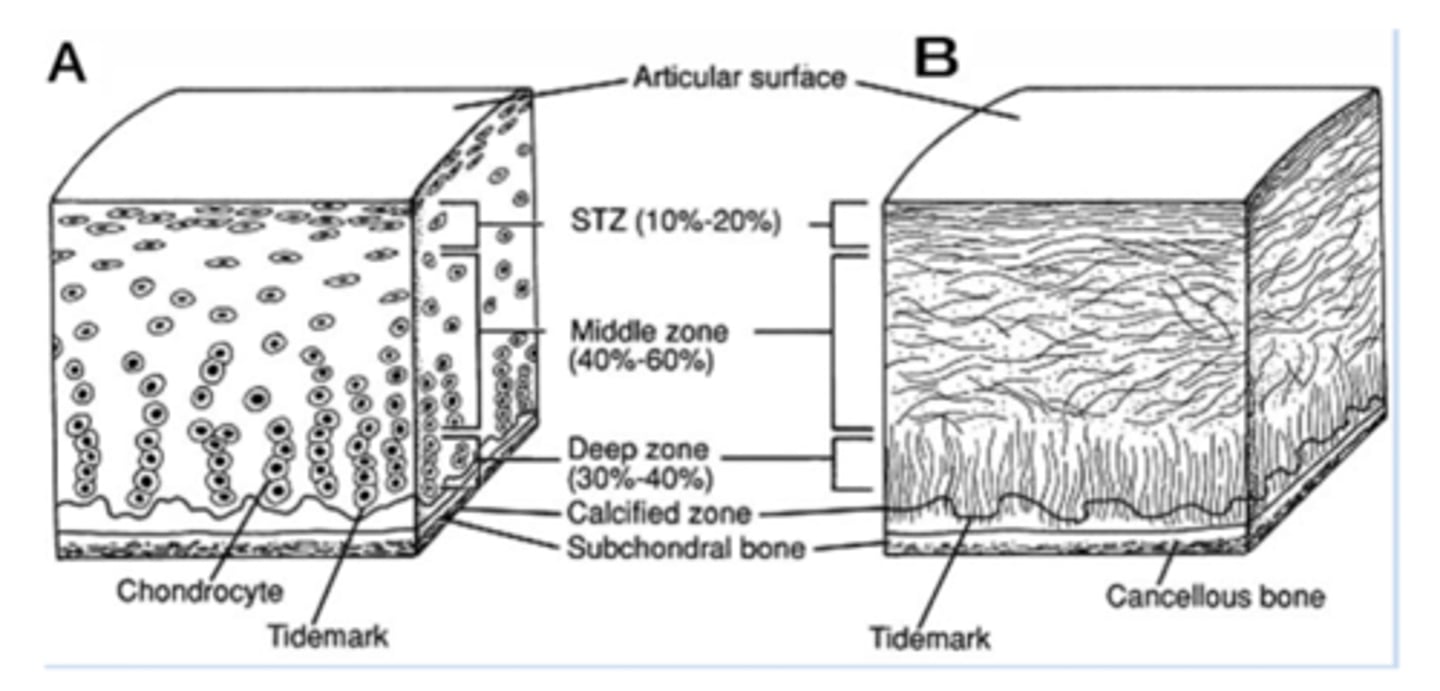
What are two important characterstics of the superficial zone?
1. Densely packed
2. Resists shear stress
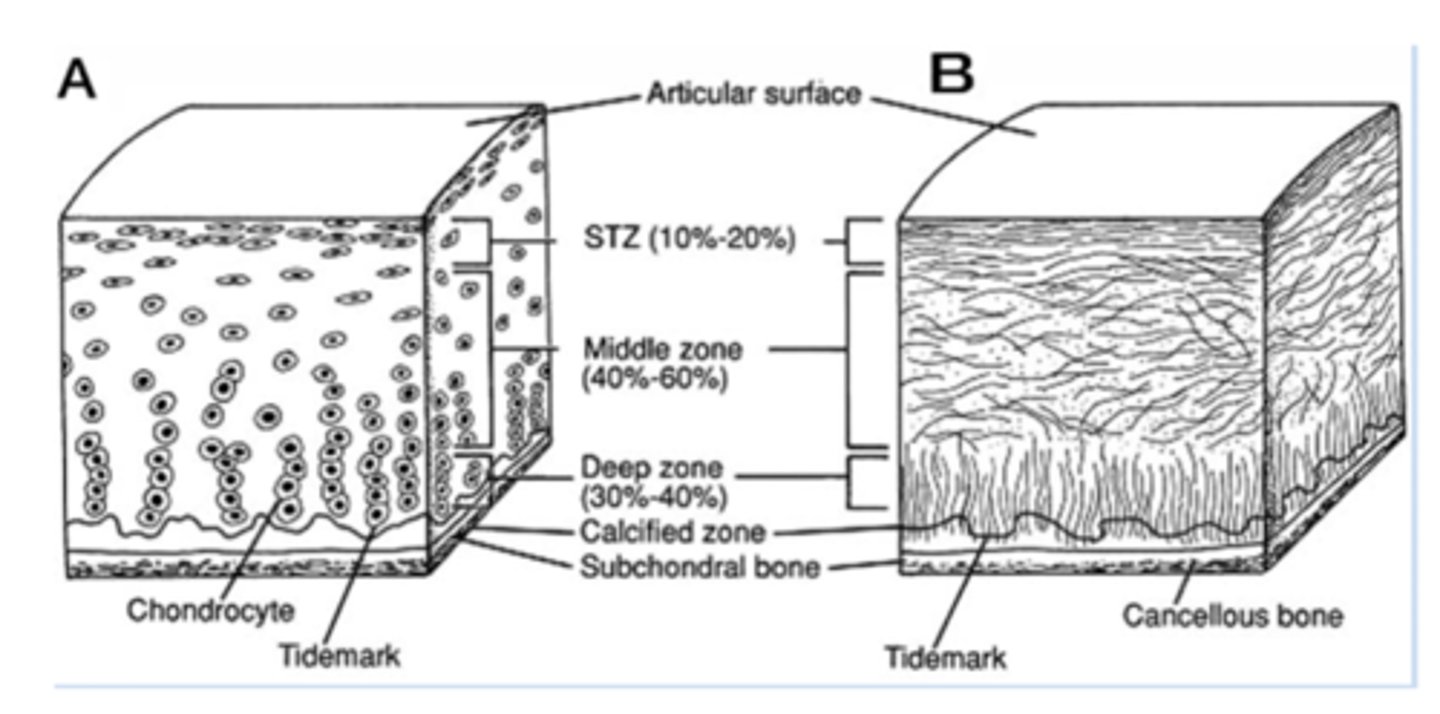
What kind of stress does the superficial zone resist?
Shear stress
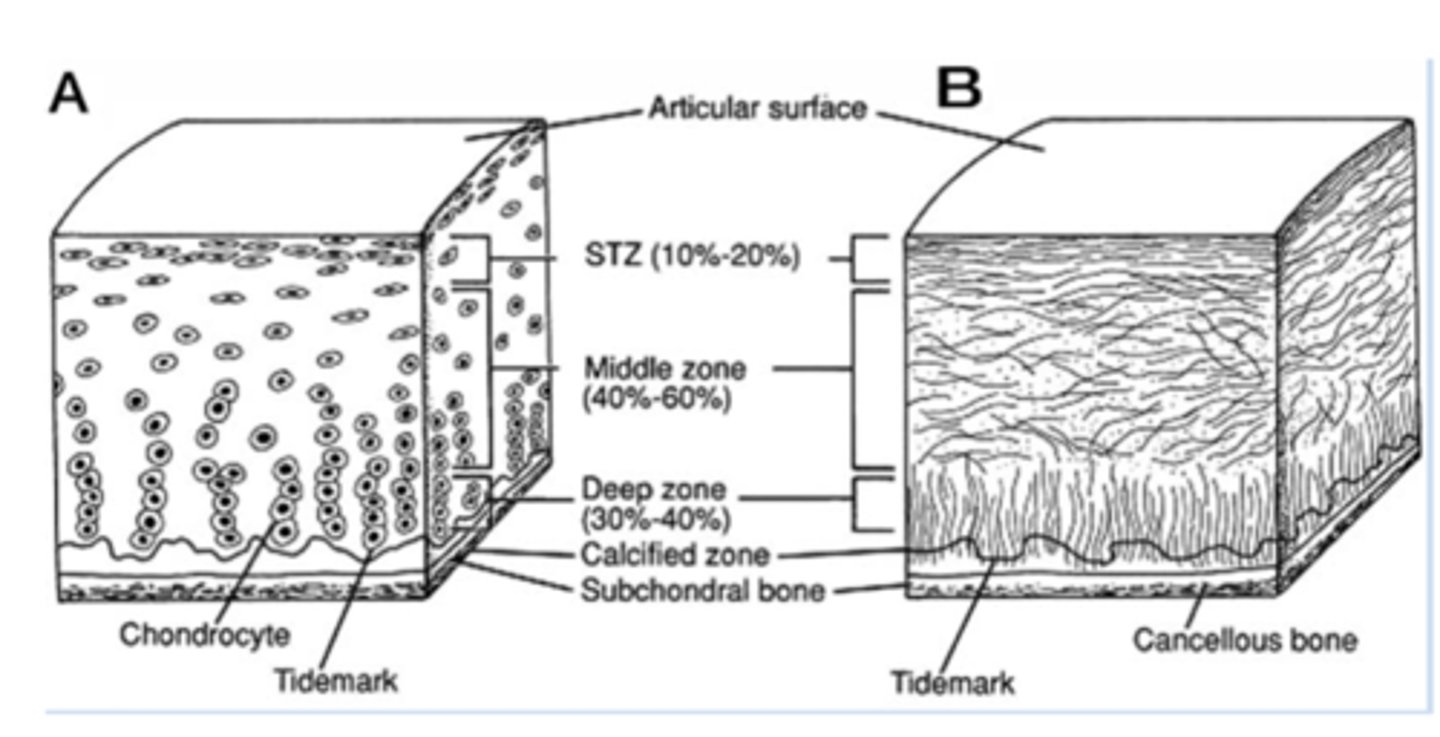
What percent of thickness is the middle zone?
40-60%

How is collagen distributed in the middle zone?
Collagen oriented obliquely
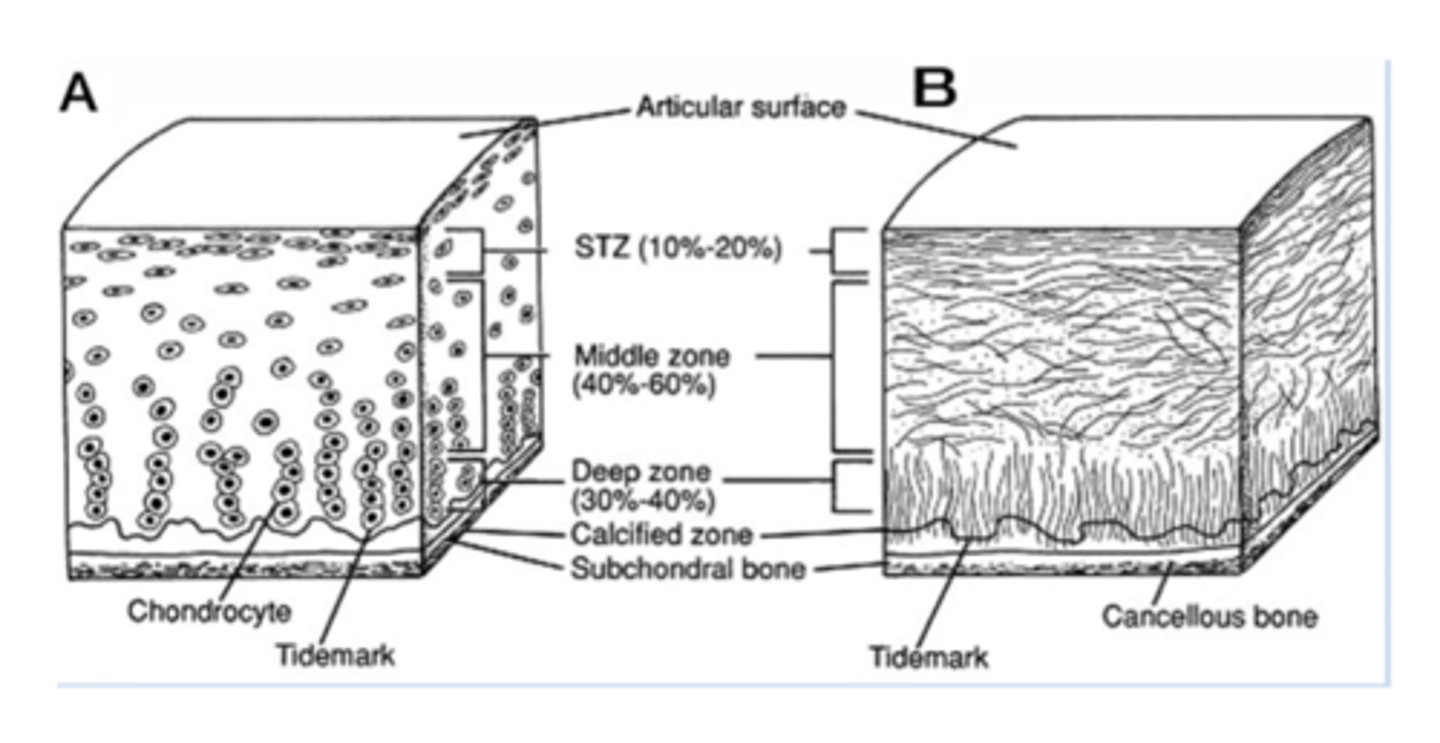
What does the middle zone protect?
It's the first line of protection to compressive forces
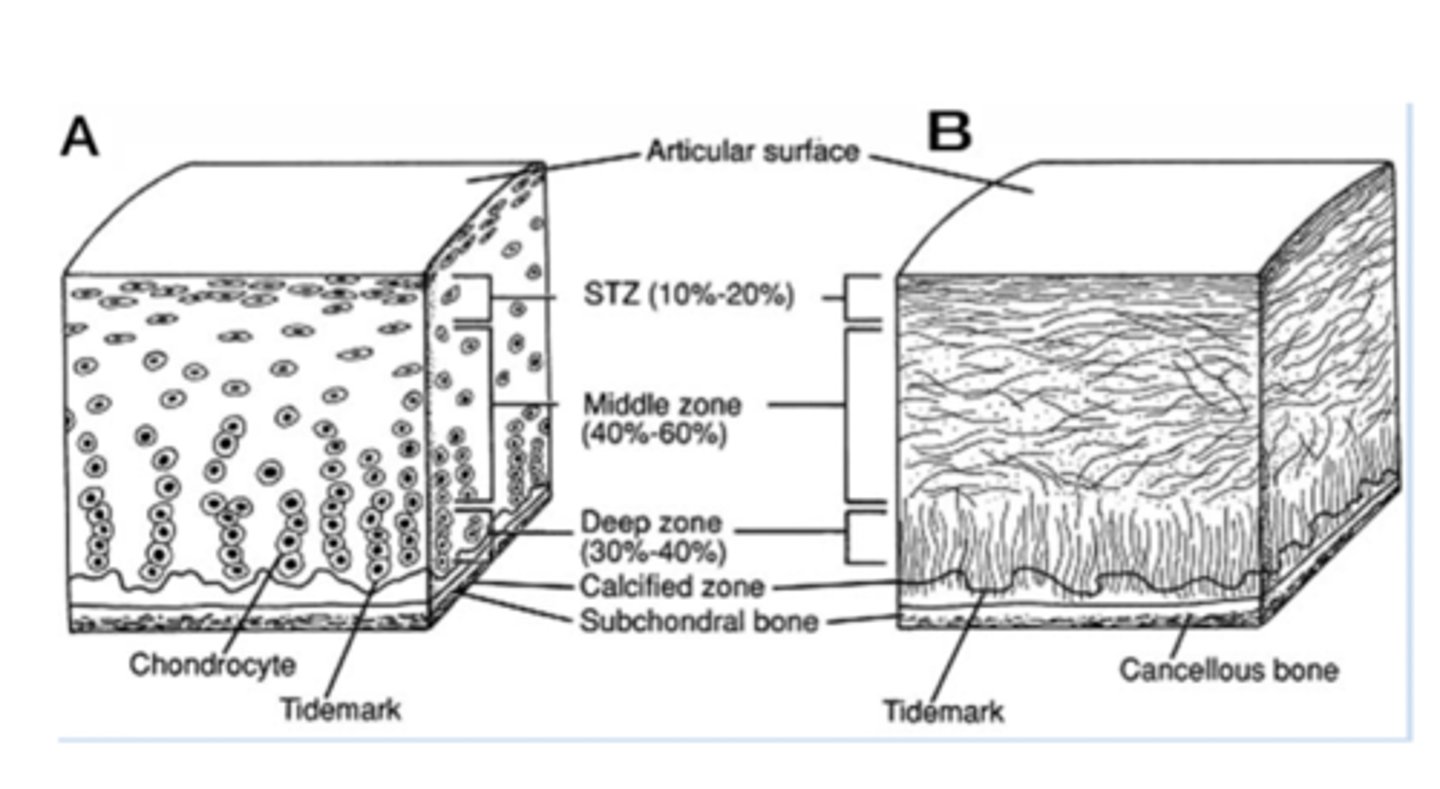
What percent of thickness is the deep zone?
30%
What does the deep zone composed of?
1. Thick collagen fibers
2. High proteoglycan content
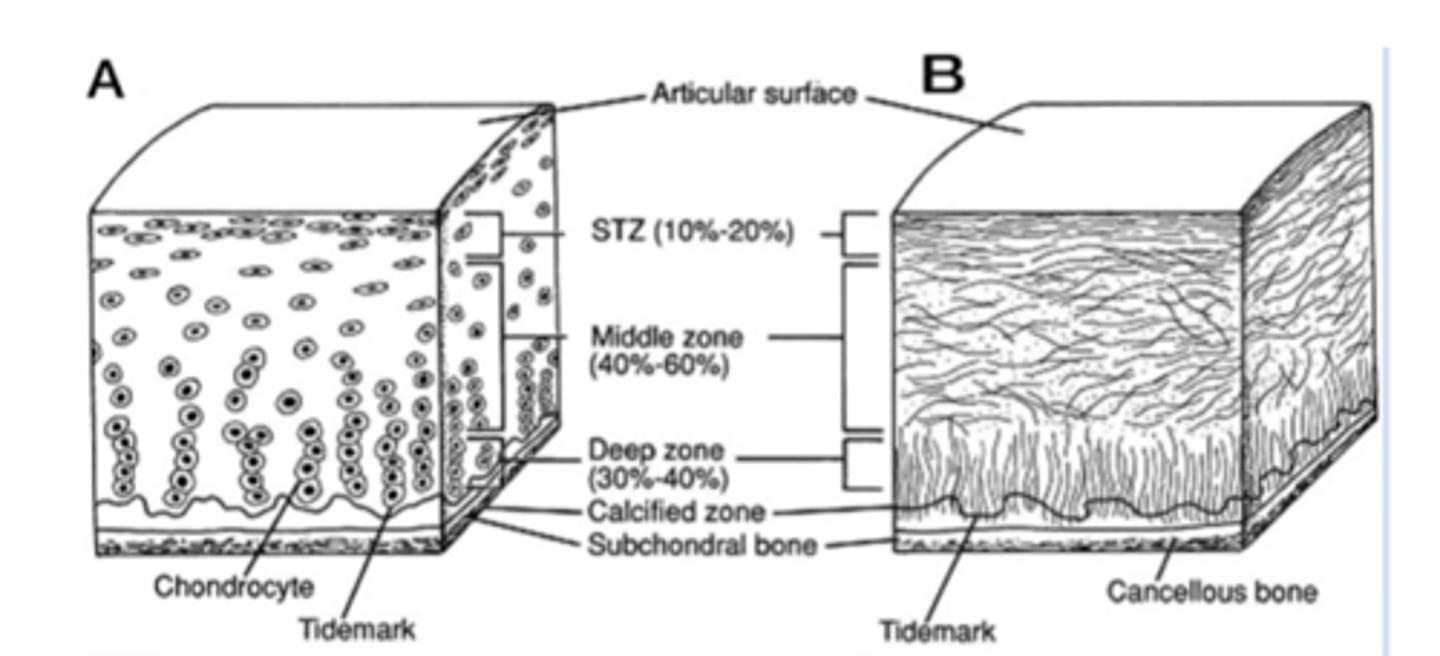
What does the deep zone provide protection against?
Compression
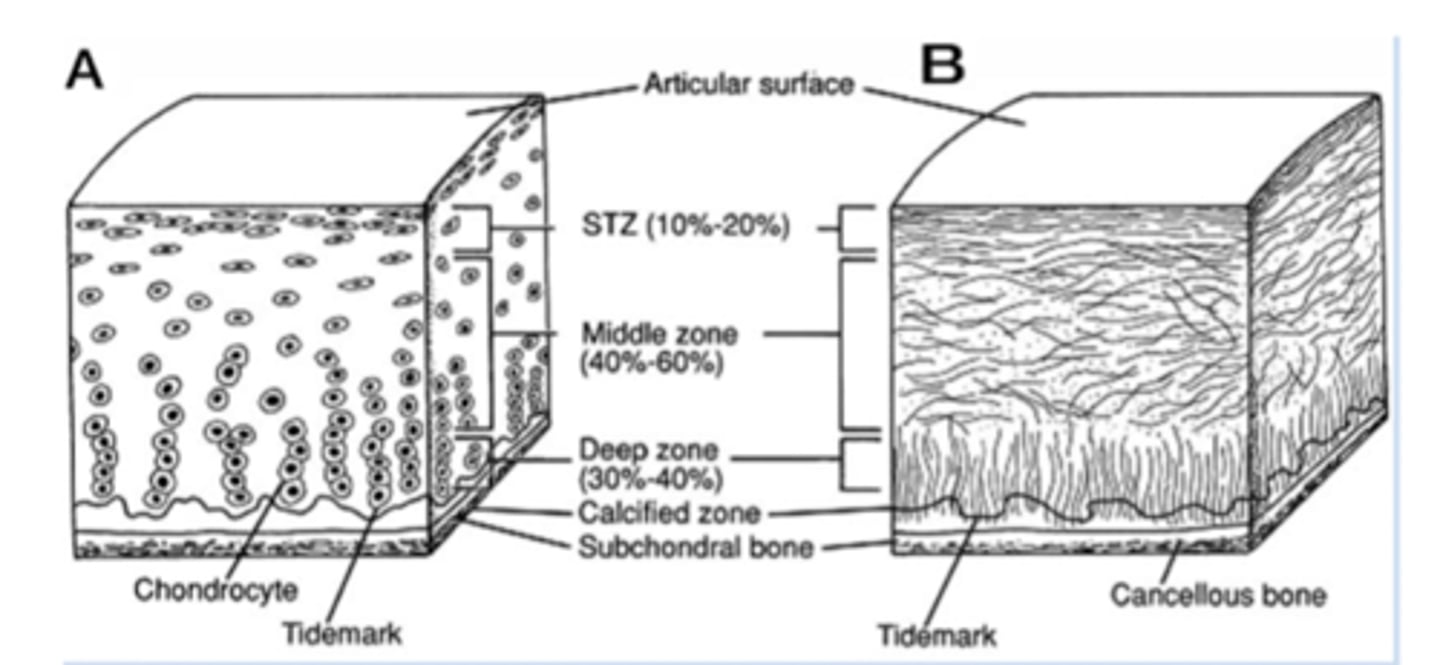
What does the high proteoglycan of the deep zone content do?
Resist compression
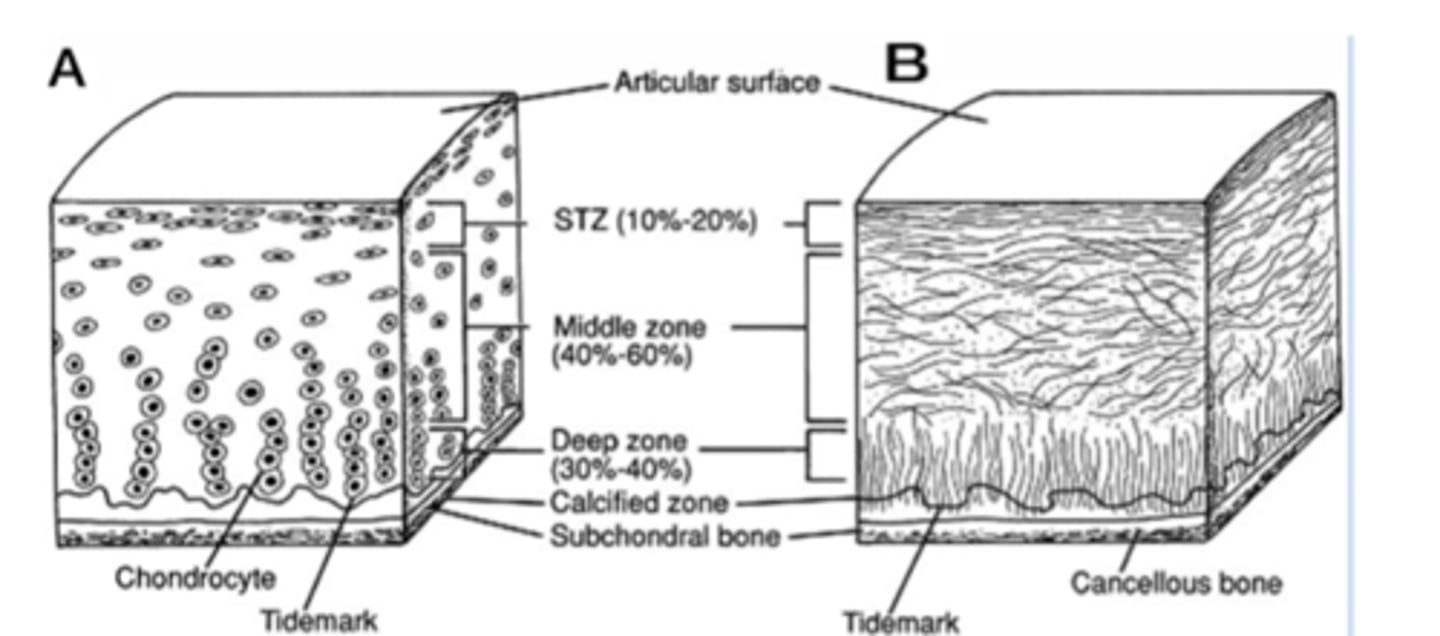
What is the tidemark of collagen?
Calcified layer of collagen fibrils that acnhors the cartilage to bone
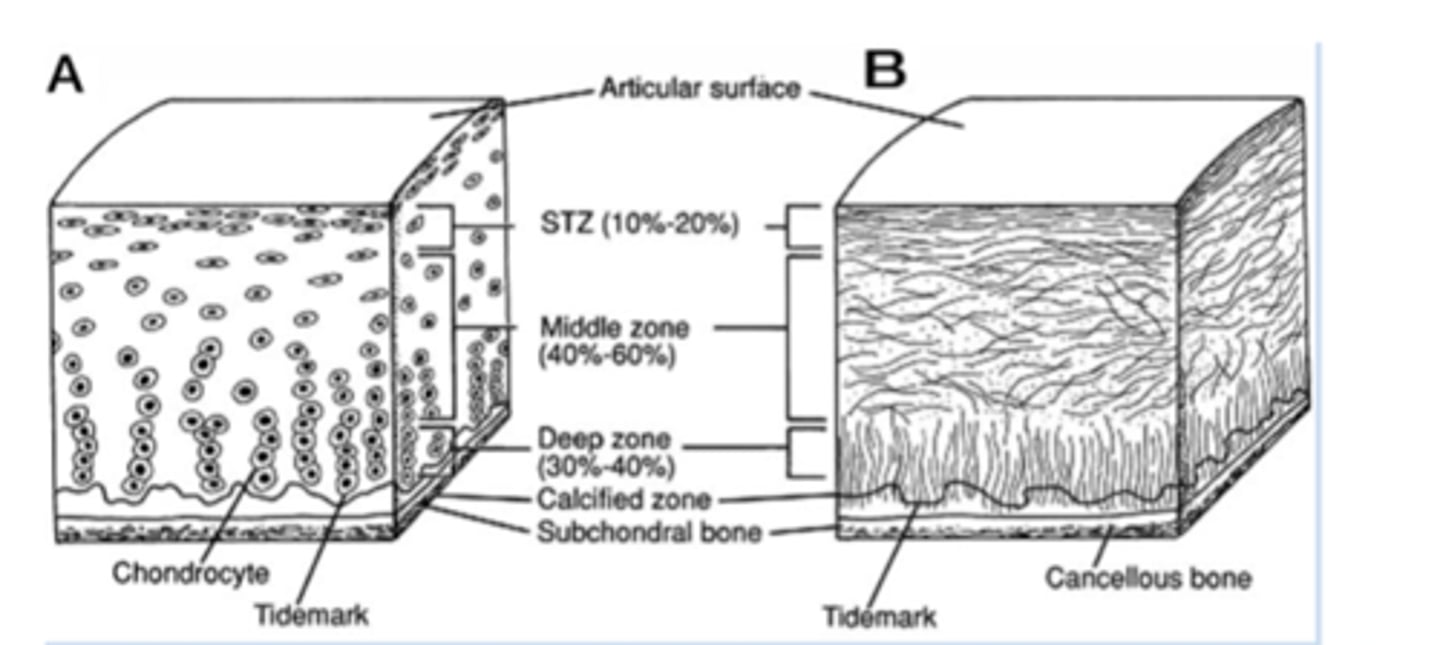
What are proteoglycans?
Large protein polysaccharide molecules composed of GAGs bound to a protein core
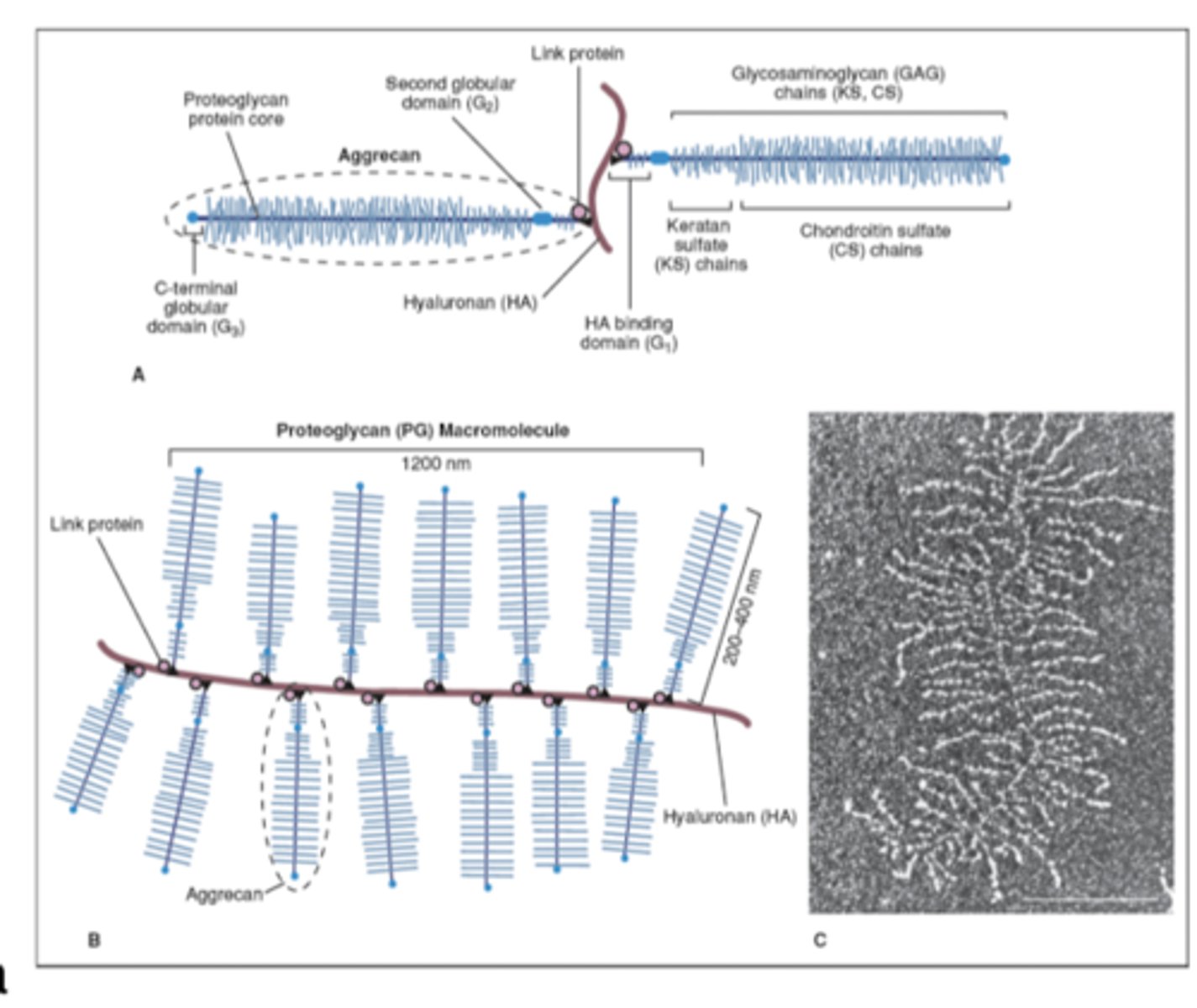
What are GAGs?
Glycosaminoglycans
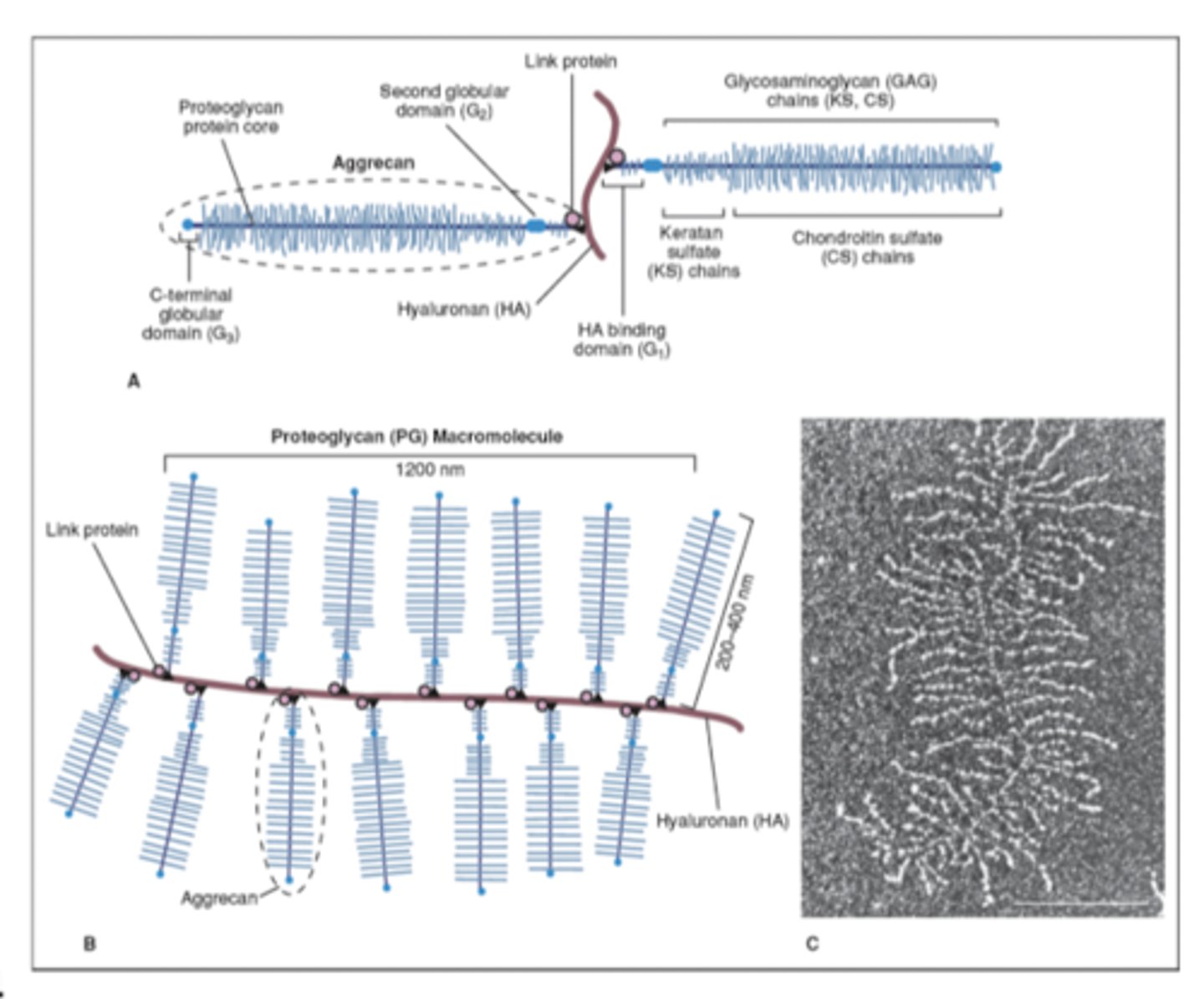
What is the most common type of proteoglycan?
Aggrecans
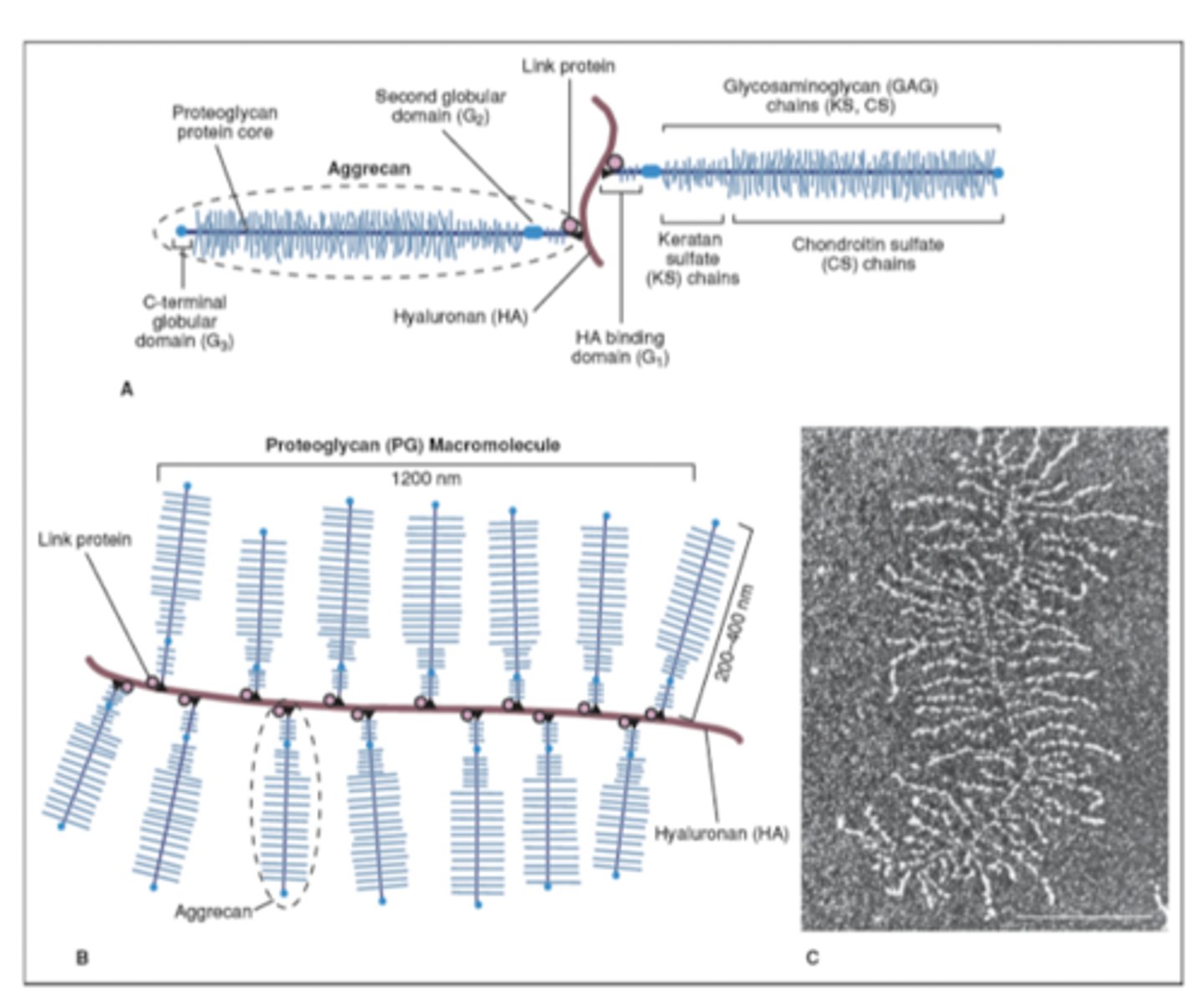
What is the function of aggrecans?
To expand in solution and give the tissue its ability to resist compression
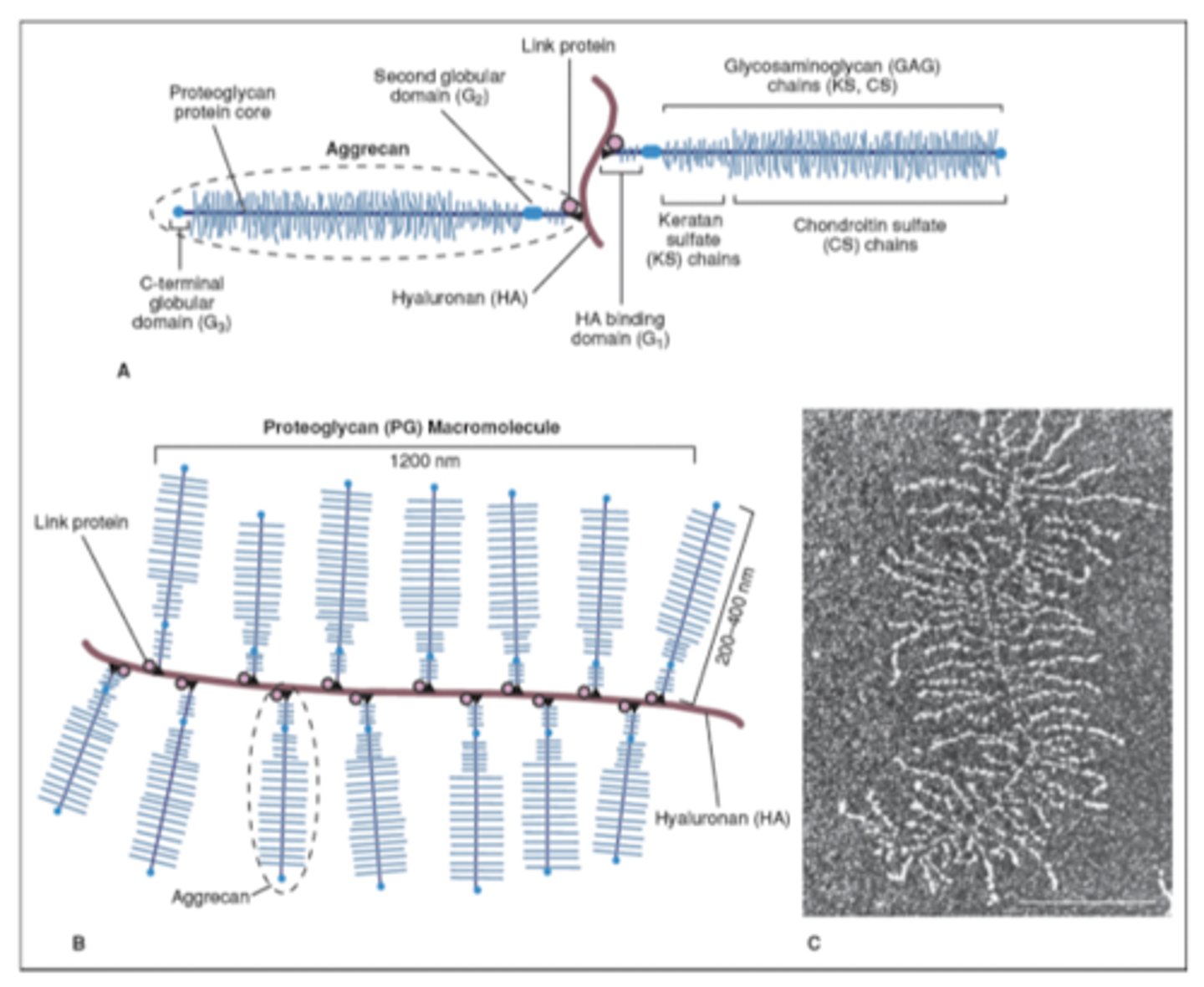
What do aggrecans have an extremely high capacity to do?
Attach to hyaluronan molecule
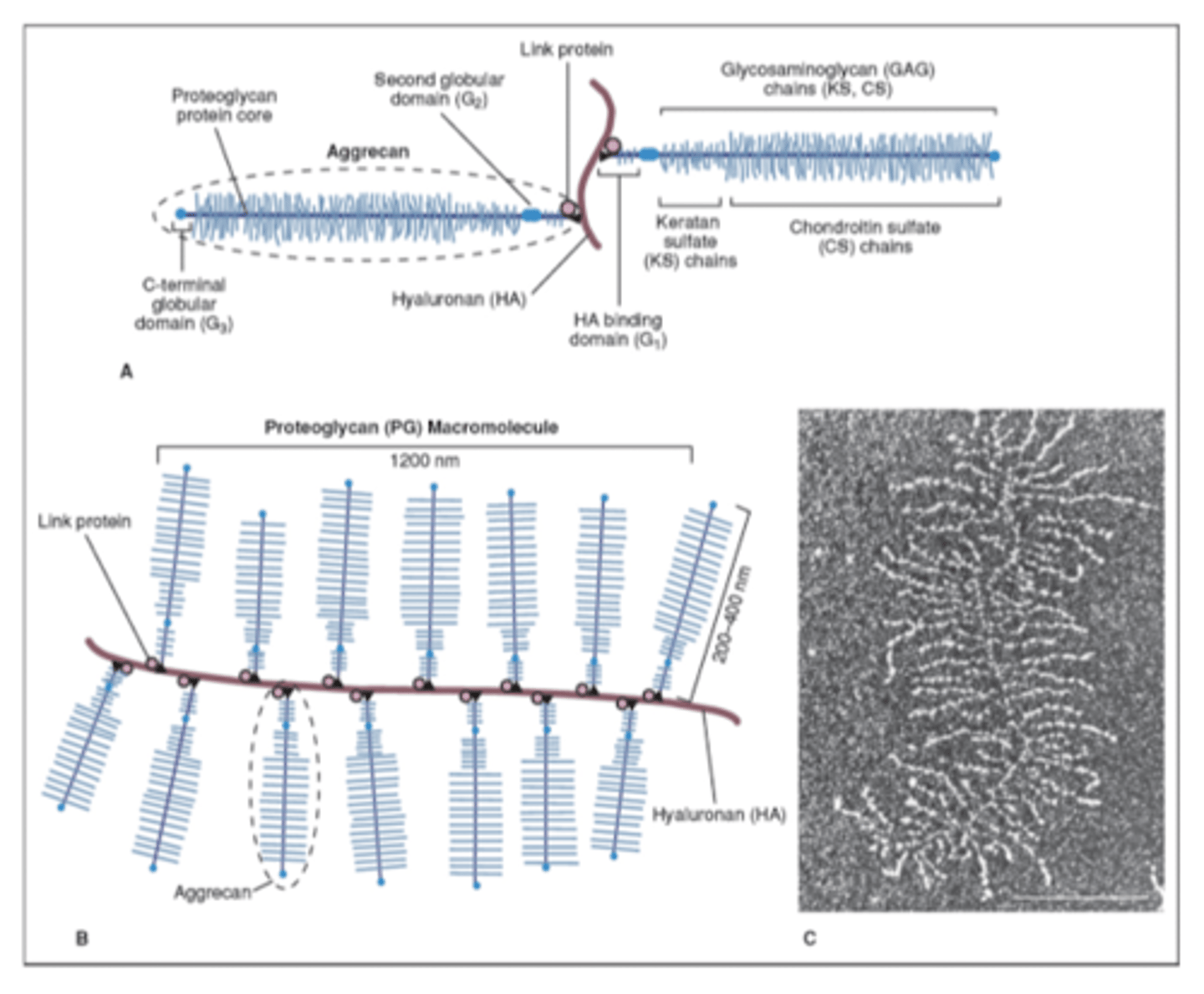
What are the 2 types of GAGs that make up aggrecan?
1. Chondroitin sulfate (CS)
2. Keratin sulfate (KS)
How does the ratio of CS and KS change?
As cartilage maturs
When is CS and KS present in a lifetime?
Mostly CS at birth and increase in KS through maturity
How does the ratio of CS and KS differ?
Based on usual weight-bearing of a joint
What is the most abundant component of cartilage?
Water
Where is water most concentrated in cartilage?
At the surface, and decreases linearly as depth increases
What occurs if a compressive force is placed on cartilage?
Up to 70% of water may be removed
What does water function as in terms of forces of cartilage? (2)
1. Controls mechanical behavior
2. Allows lubrication of the joint
What is water essential for?
The health of articular cartilage
How does water affect the health of articular cartilage?
Permits gas, nutrient, and waste product movement between chondrocytes and the surrounding nutrient-rich synovial fluid
What are chondrocytes?
Cartilage cells
What is the function of chonrdrocytes?
To manufacture, secrete, organize, and maintain extracellular matrix

What do chondrocytes control?
Soluble mediators (growth factors and cytokines)

What do chondrocytes respond to?
1. Growth factors
2. Mechanical loads
3. Hydrostatic pressures
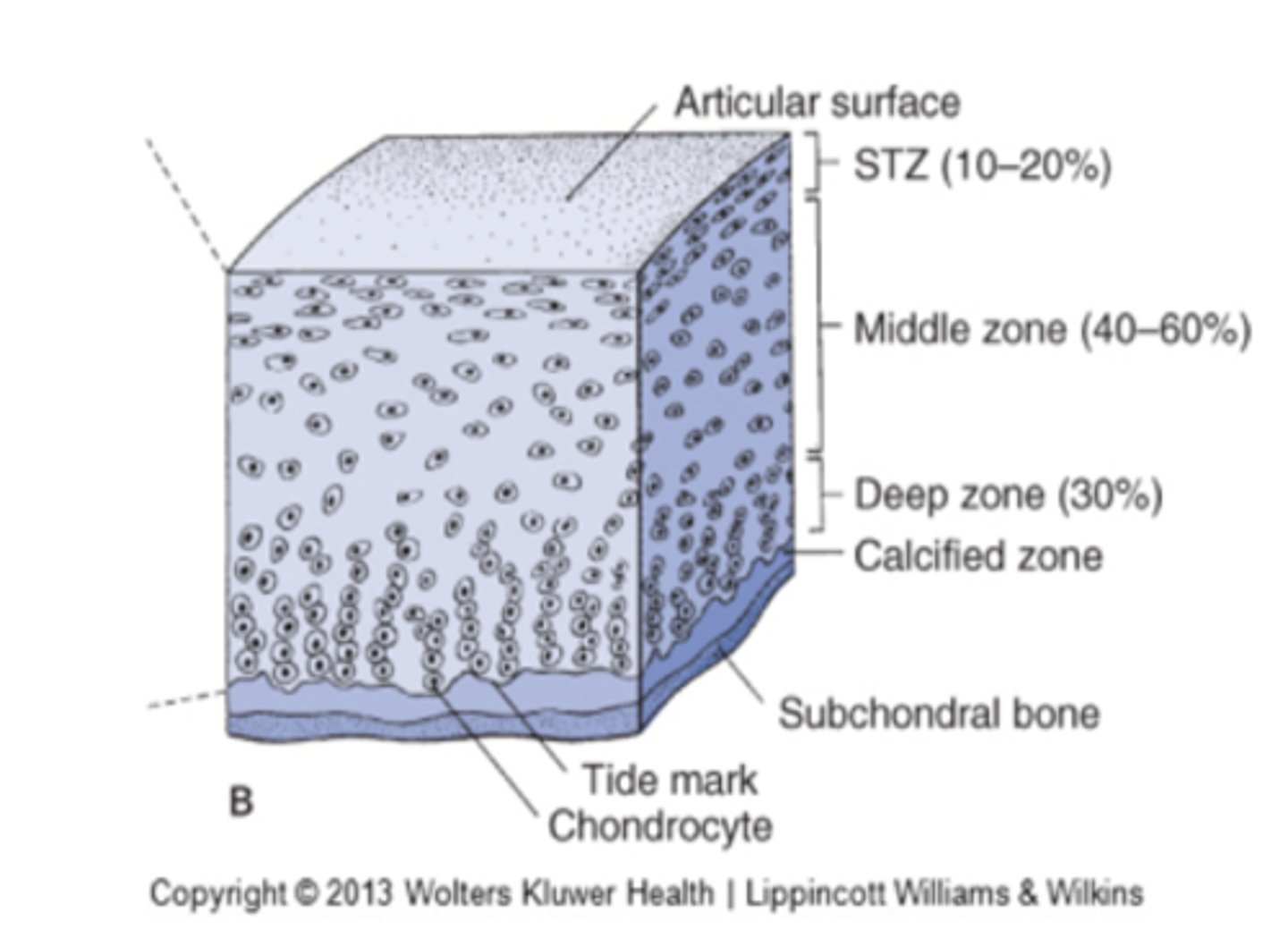
Do chondrocytes have cell to cell connections?
No
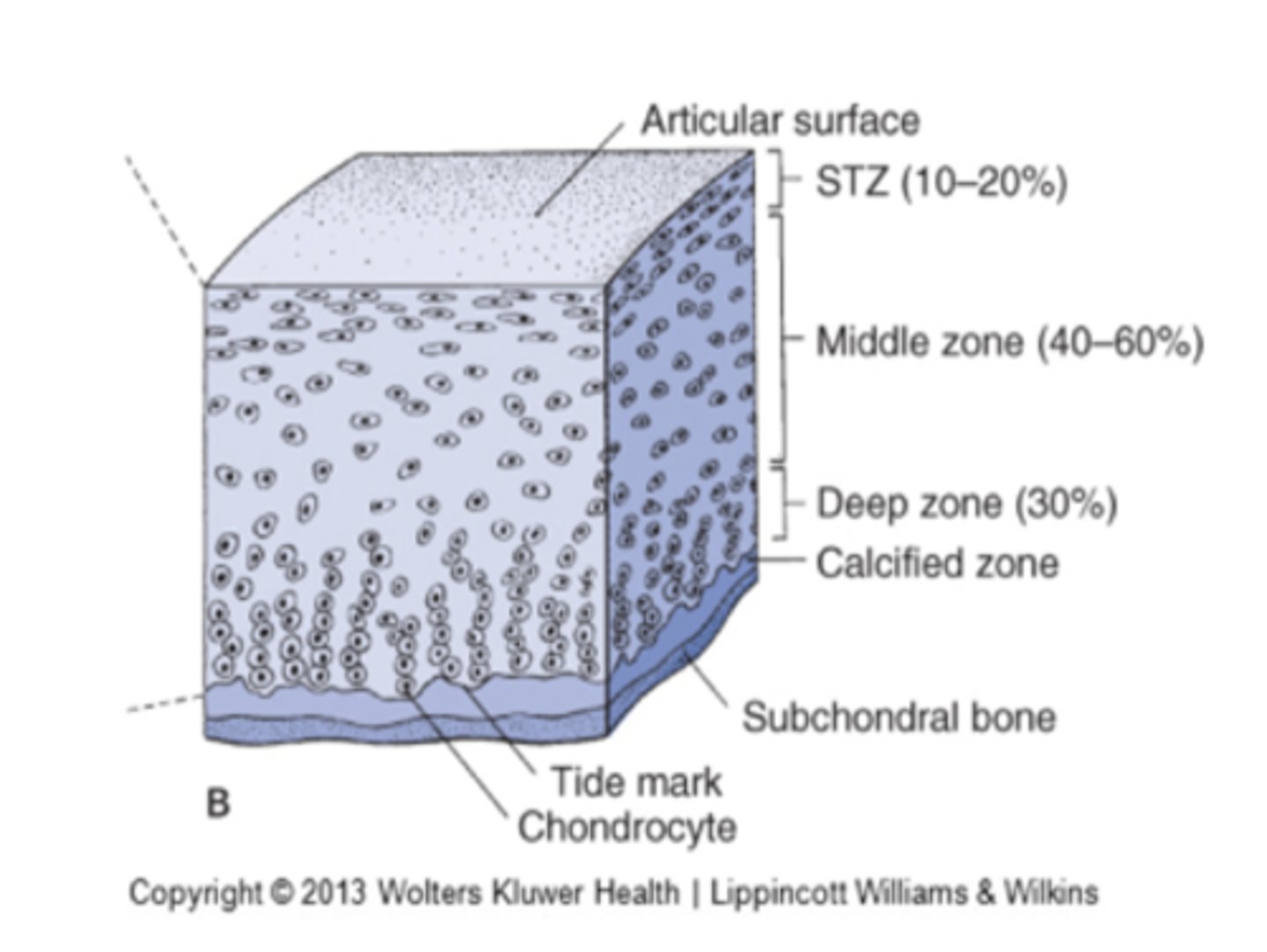
Do chondrocytes replicate?
No, they have limited capacity for replication
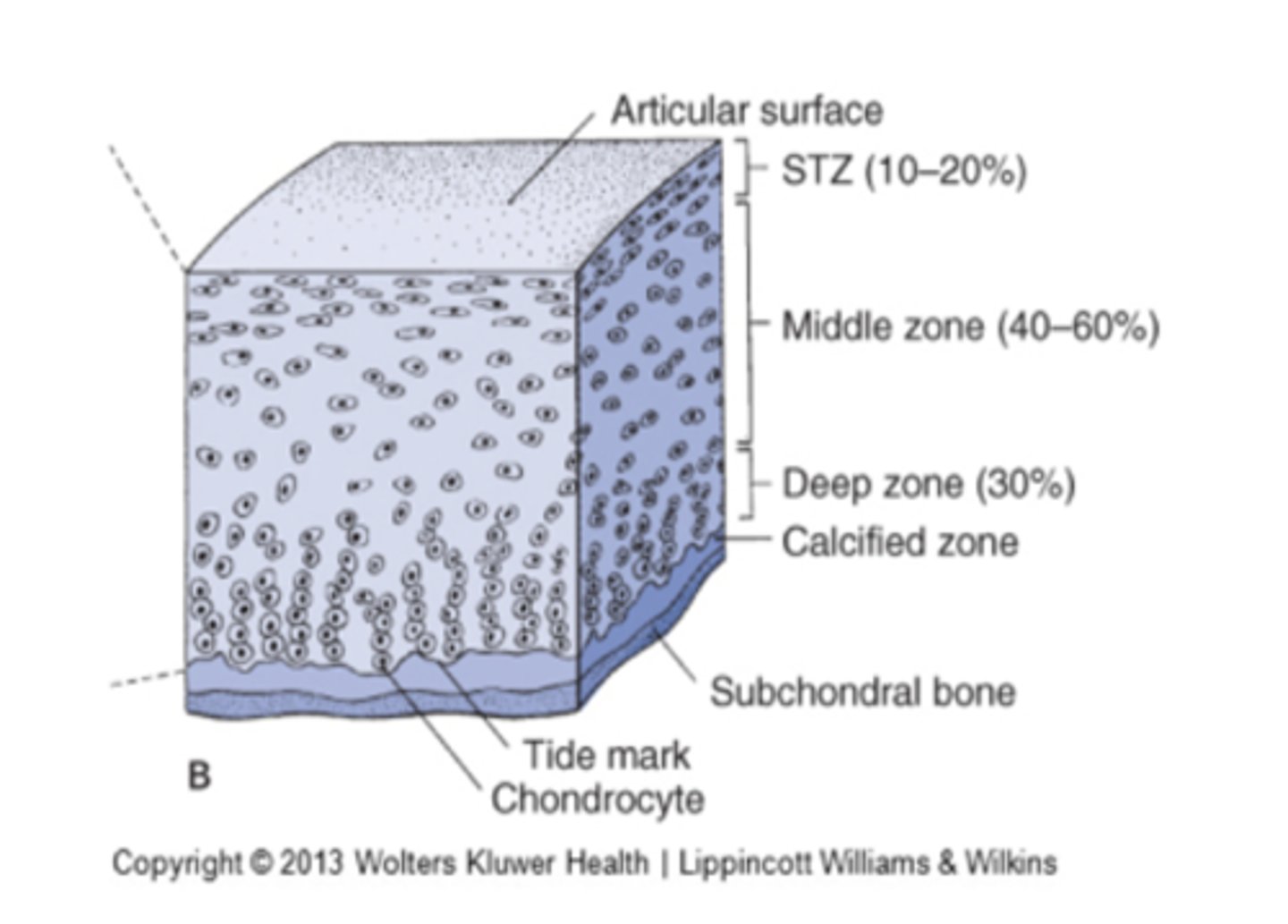
What do forces at joint surfaces vary from?
Almost zero to more than 10x body weight

What do contact areas between joint surfaces vary in?
Pressure (AC is very STRESSED)

What is one of the biggest functions of articular cartilage in terms of tissue?
It has complex mechanisms involved in protecting tissue
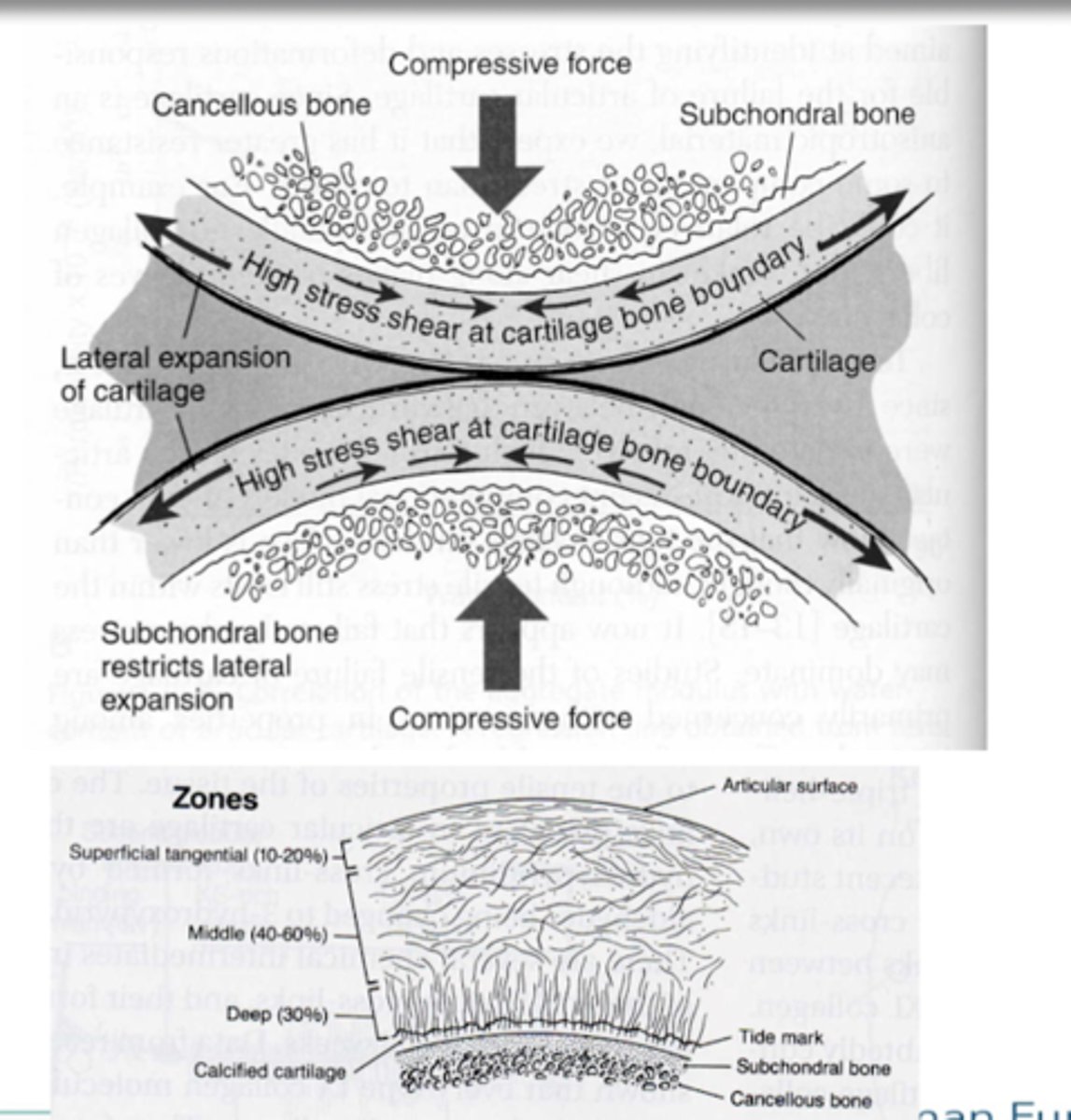
What kind of charges do GAGs have?
Negative
What do negative GAG charges lead to?
GAGs repelling each other and attracting water molecules
What occurs when cartilage is compressed?
Water molecules are squeezed out of the tissue
What happens when water decreases during AC compression?
PG concentration increases
What occurs during an increase in PG during AC compression?
Osmotic pressure then pushes water from an area of low solute concentration (outside catrilage matrix) to an area of high concentration (inside cartilage matrix)
What does the change in osmotic pressure in the tissue lead to?
The swelling opposes the compressive force
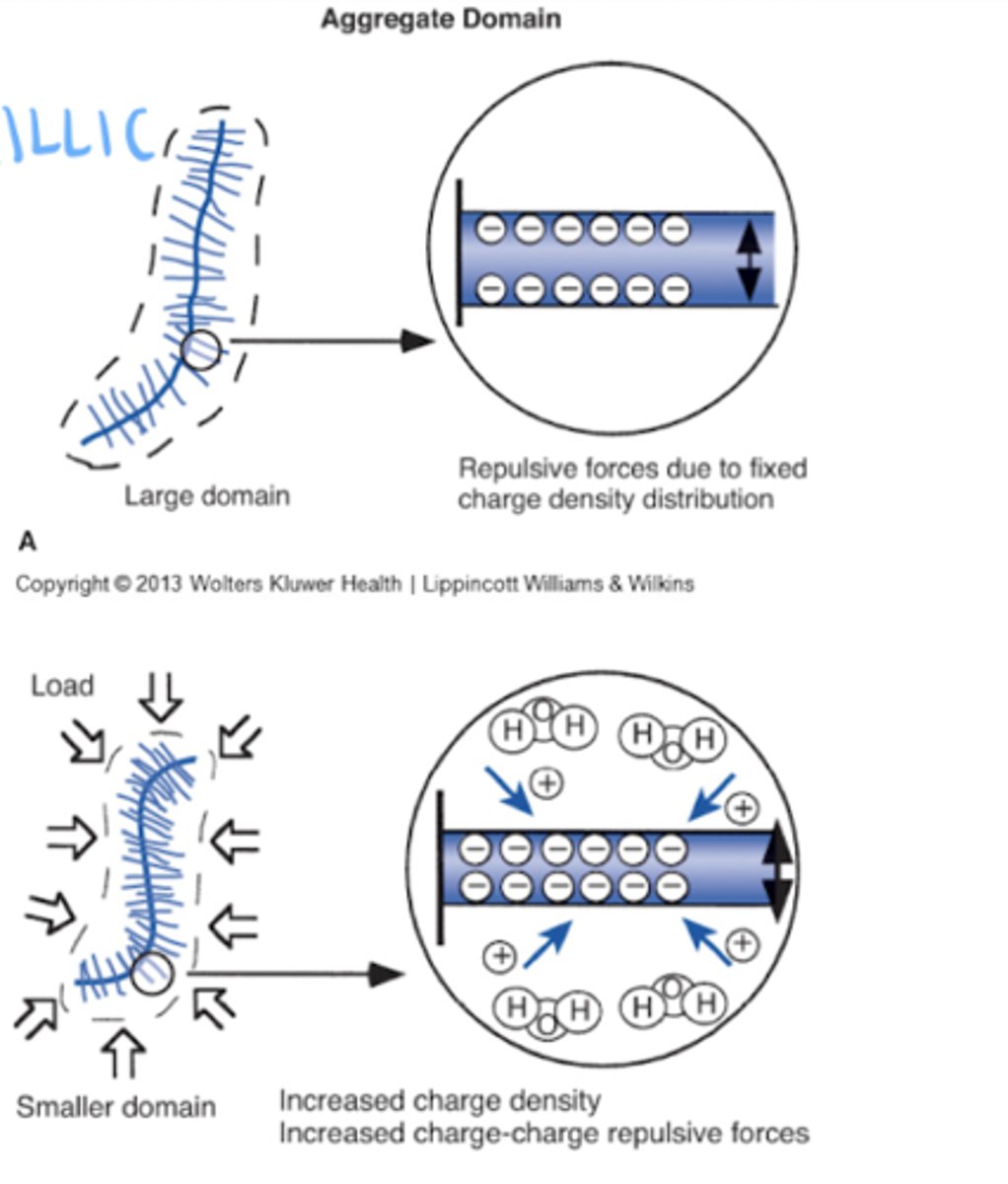
Is cartilage hydrophobic or hydrophilic?
Hydrophilic
What is creep?
Viscoelastic material is subjected to a constant load
Explain the speed of creep.
Slow, progressively increasing deformation
What is stress relaxation?
Viscoelastic material subjected to constant deformation
Explain the speed of stress relaxation
Rapid, high initial stress, followed by a slow progressively decreasing stress
What is the creep response in compression?
1. Apply constant load -> tissue deforms
2. When loaded, fluid is forced out until equilibrium
3. Fluid reabsorbed when load is removed
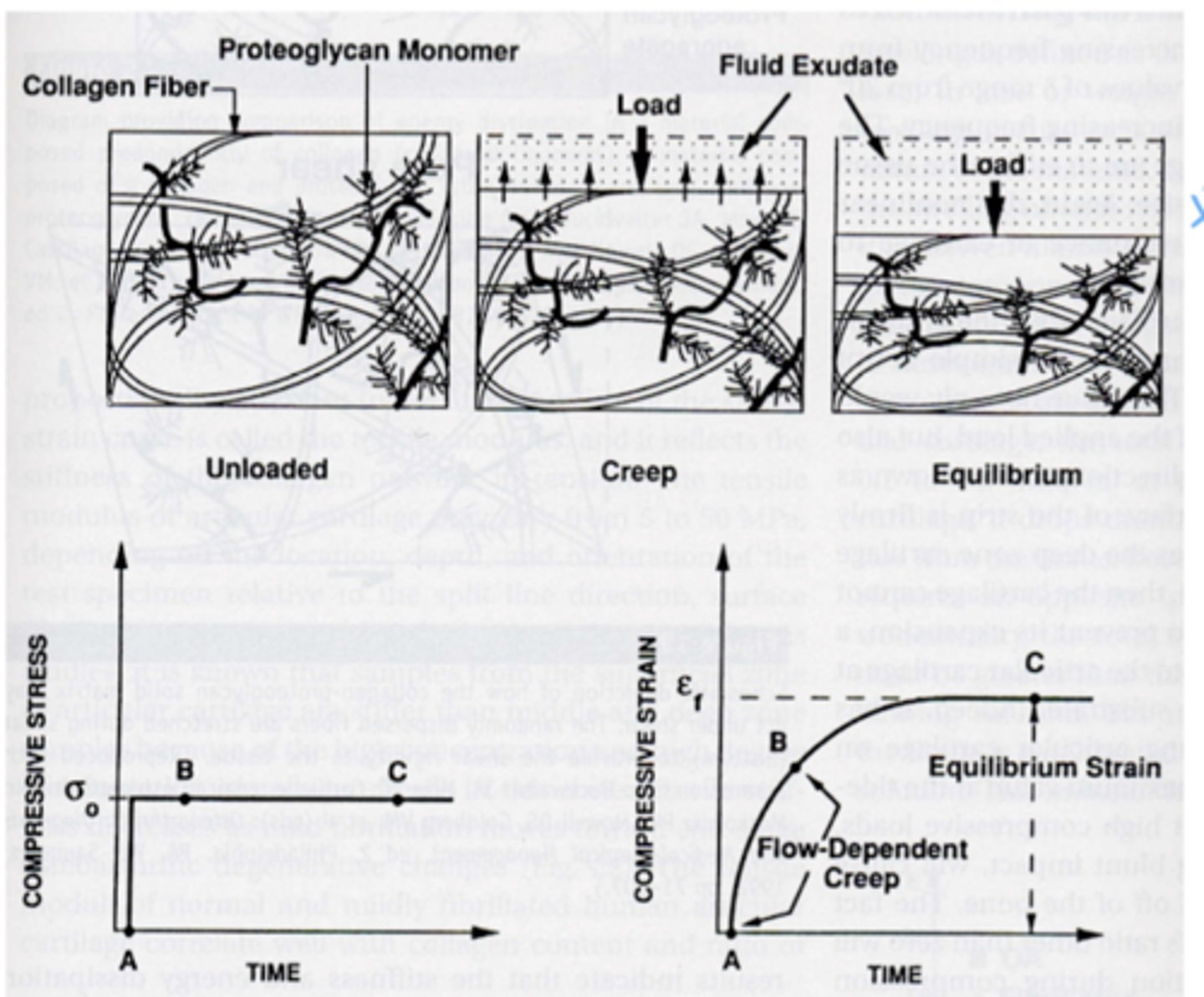
What do joints serve as?
An area of contact between bones
What is the goal of synovial joints?
Movement; we want surfaces to slide past each other
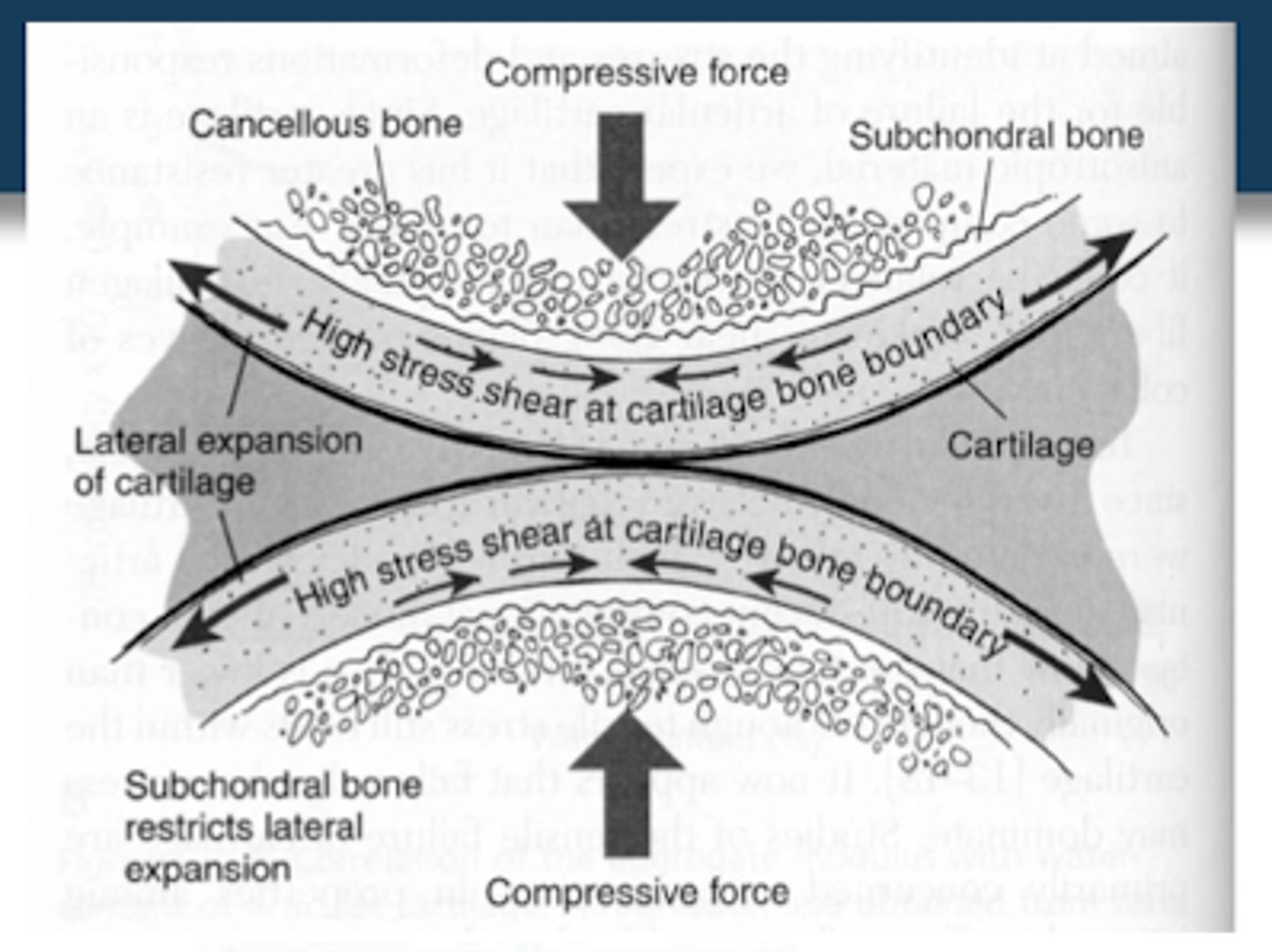
What is the coefficient of friction of a joint?
0.02
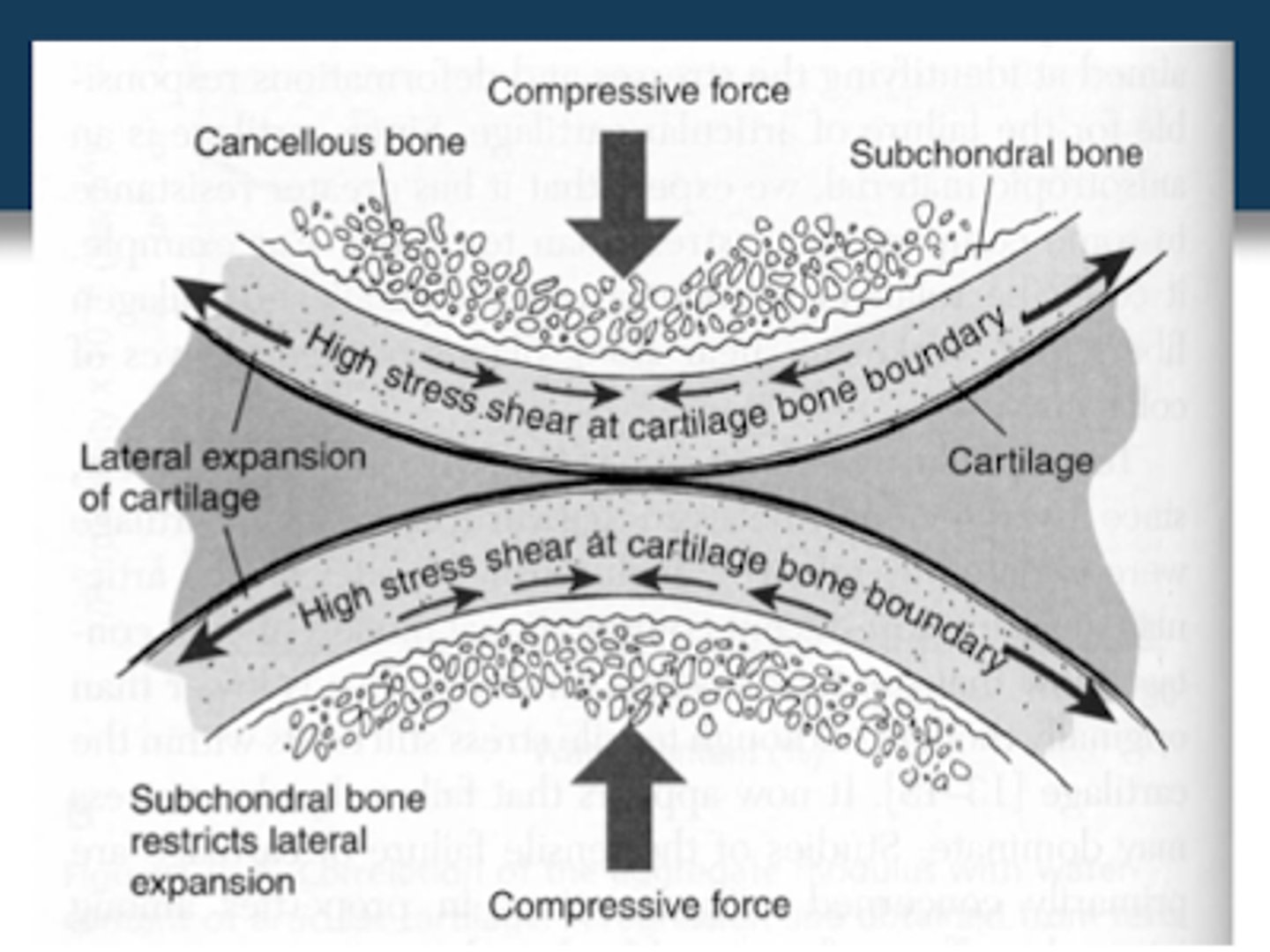
What does a coefficient of friction do?
Helps decrease friction force on joints
What is the fluid film of joints?
Thin layer of lubricant causing bearing surface separation
How is the contribution of the fluid film of joints?
Transient (lubricant squeezed out of articular area)
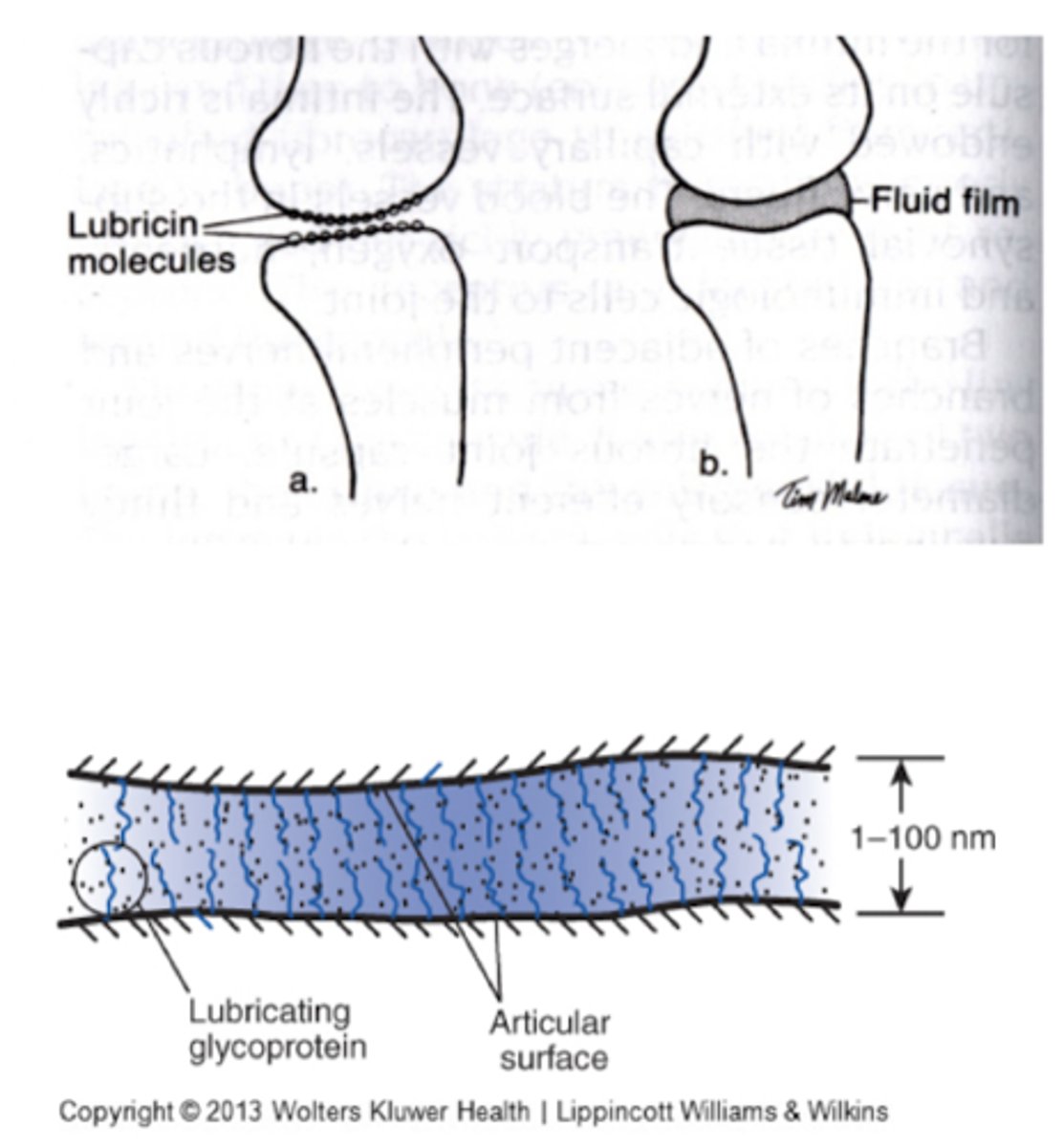
What is a fluid film effective for?
Possibly effective during sliding at elevated speeds
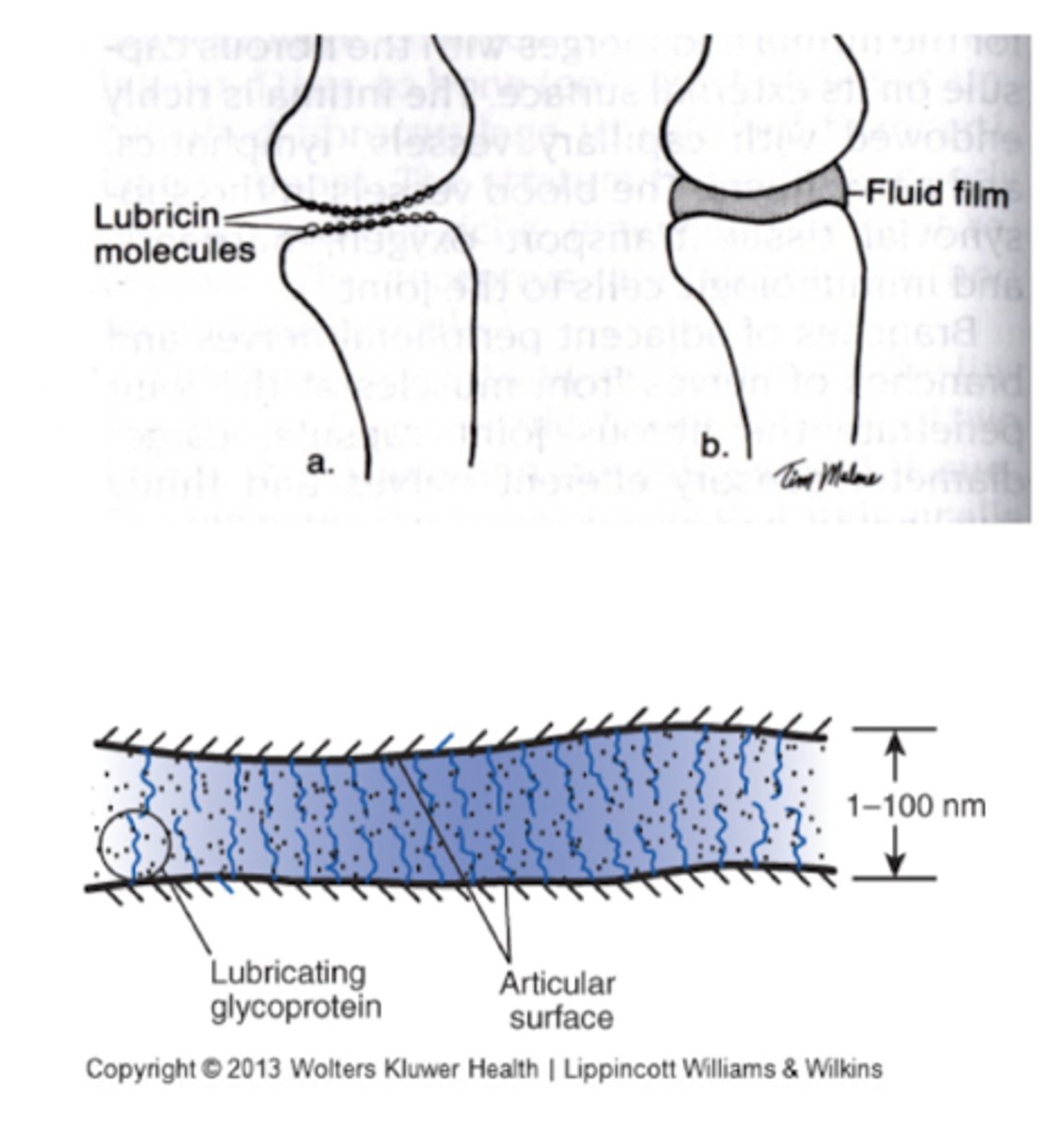
What is the boundary lubricaiton?
Single monolayer of lubricant molecules absorbed on each bearing surface
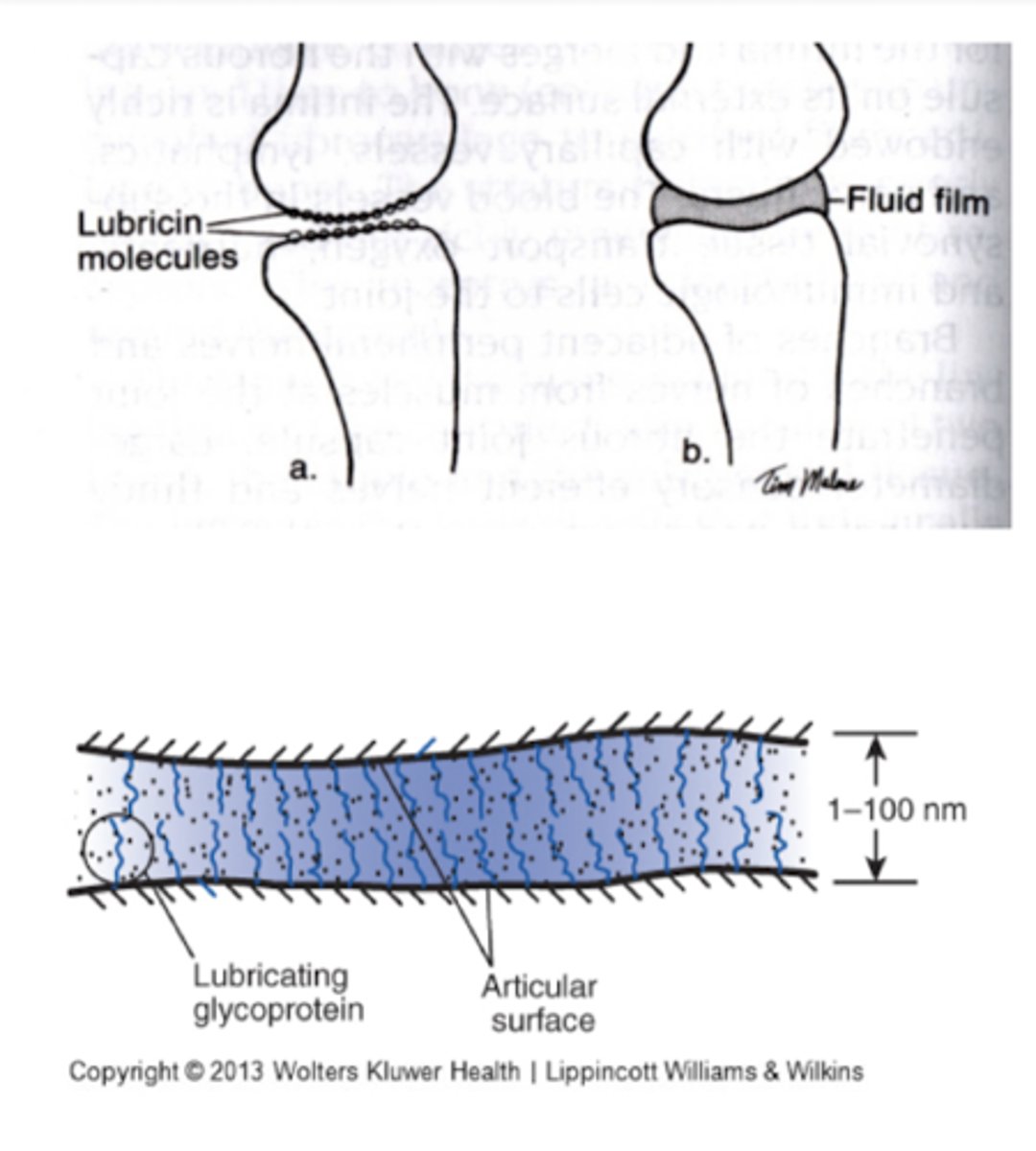
When is boundary lubrication needed?
During loading at low speeds (upper extremity, walking)
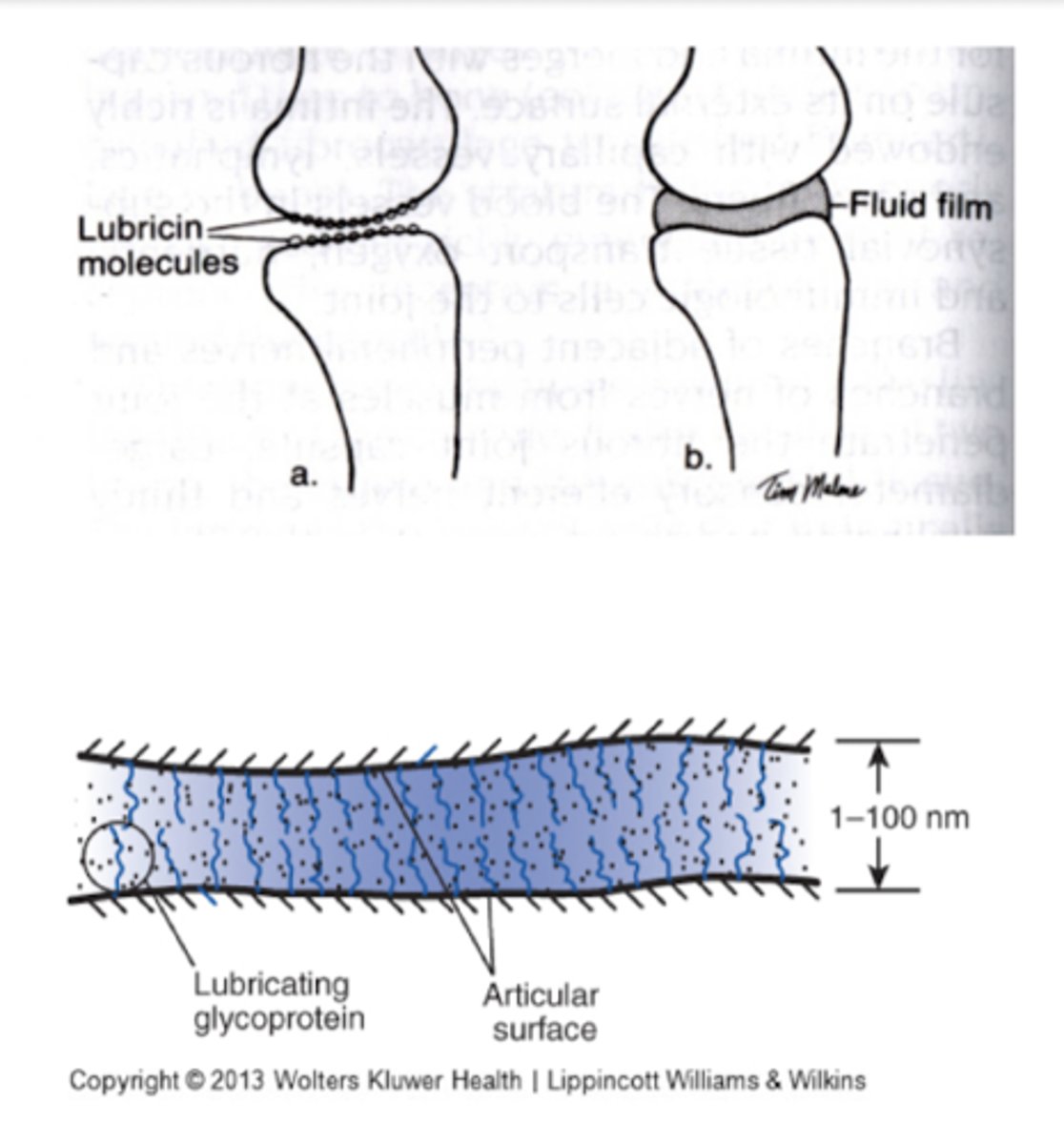
What is lubricin?
Glycoprotein responsible for boundary lubrication
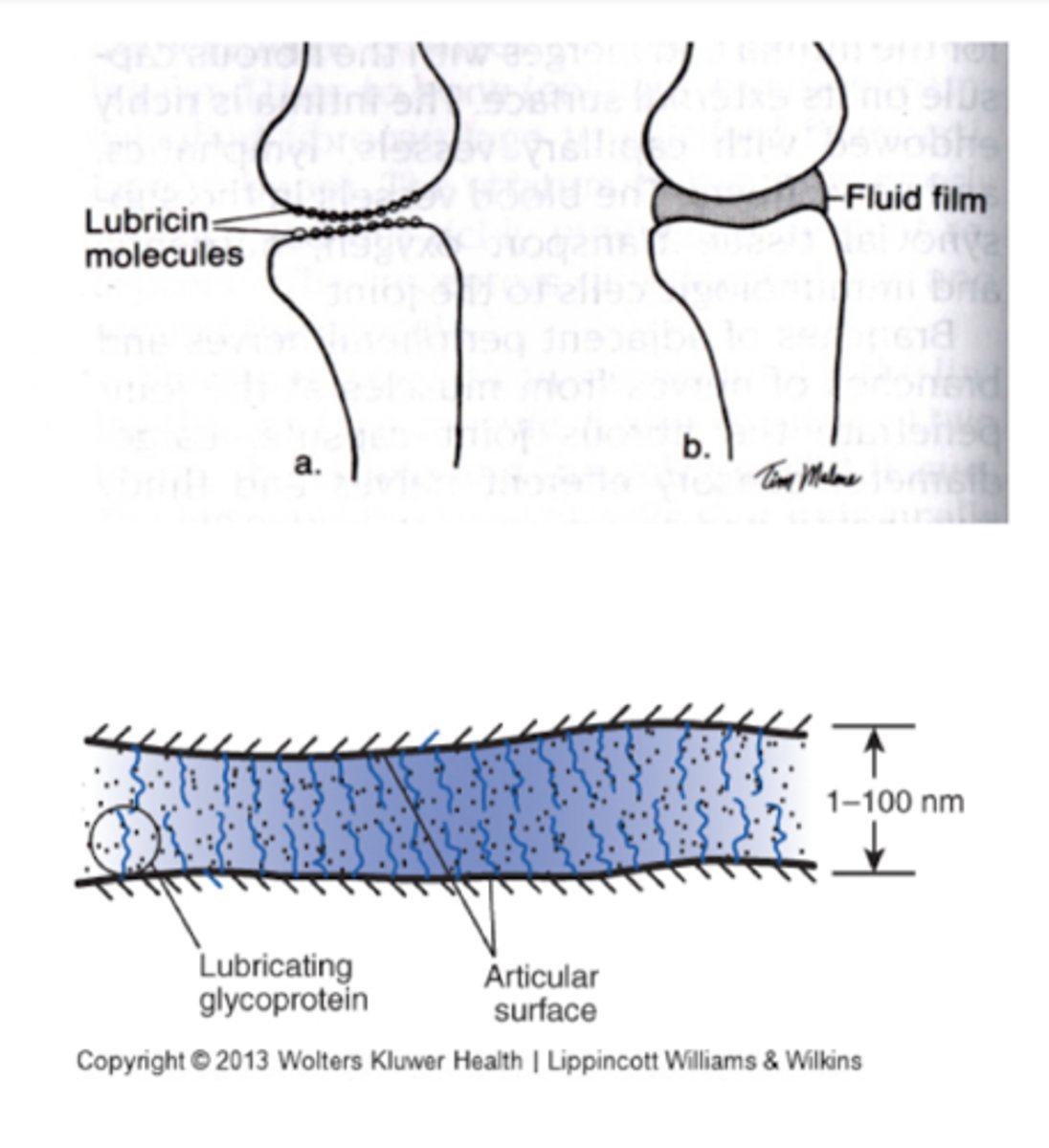
What is wear?
The unwanted removal of material from solid surface by mechanical action
What does interfacial wear result from?
The interaction of bearing surfaces
Why is interfacial wear unlikely in cartilage?
Due to boundary lubrication and interstitial fluid pressurization
What does fatigue wear result from?
Bearing deformation under load
Why is fatigue wear likely in cartilage?
Since most physiologic activities cause repetitive articular cartilage deformation, possibly from disruption of the collagen-PG matrix